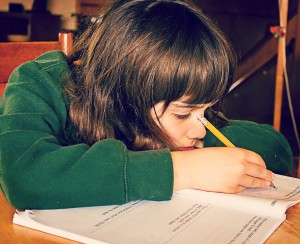6 Ways to Help Your Elementary Student in School
Do you have a bright, capable, intelligent, creative child that struggles in school?
Do you worry about them being discouraged? Do you dread homework and tests as much or more than they do?
Your child may be a visual learner and school is not teaching or measuring the things they’re good at. Visual learners need to see images to see, think and learn effectively. They’re big picture, creative, conceptual thinkers that may struggle in our language-heavy, test focused education system. They can feel lost, overwhelmed and discouraged. By using less language, adding images to their study and having them participate in the arts; you can help bridge the gap. This will make things so much better for them and for you.
Don’t panic. Your kid is great just the way they are. They have tremendous strengths and they have some weaknesses, like we all do, that need to be developed. Remember, school is focused on subjects that are easily measured and test well which are better suited to auditory learners.
Make study visual. Help your visual student learn to study by using techniques specific to the way they think. Encourage them to make their notes visual, adding pictures and color to enhance key points. Colored flashcards also help visual students with memorization. For lots more subject specific tools, take a look at the Tools & Tips page at BetteFetter.com.
Use less language. At school and at home, too many words can overwhelm visual kids. They need to develop strong language skills and they will but when teaching or giving direction – simplify verbal instructions. Make lists, be brief and include pictures when possible.
Participate in the arts. Our visual kids think, learn and communicate best through the arts. The arts come naturally to them and time spent developing their artistic abilities will directly affect their academic abilities. Encourage regular participation in art, dance, music or theater classes.
Provide multi-sensory learning opportunities. Learning through immersion is essential for visual children. They learn best when learning includes seeing, touching and doing activities. Things like map making, building, dioramas and role-play are great learning supplements.
Develop organization skills. Order does not come naturally for visual kids, but it’s a skill they’ll need for school and in life. Be intentional about helping your visual child learn to organize. Write down homework assignments, use visual calendars, and organize tasks by color.
Your child needs to learn in ways that match the way their mind works. By making some adjustments and doing these kinds of things at home, you can break the cycle of discouragement and help your child gain success in the classroom.











